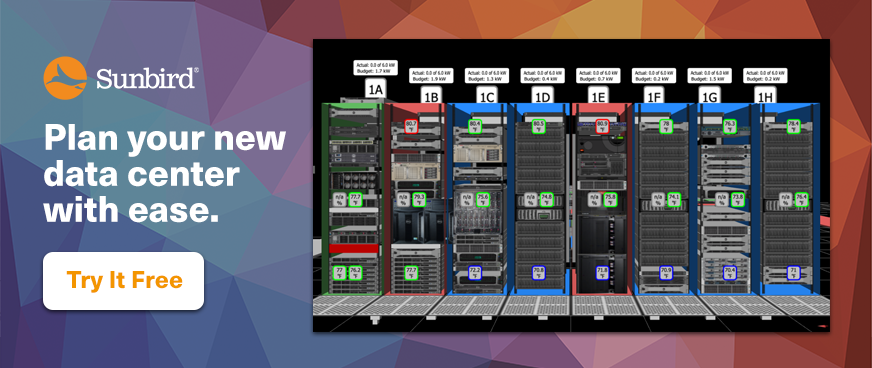Top 5 Benefits of a Data Center Consolidation
Data center consolidation involves reducing the number of servers, storage, network systems, racks, or entire data center sites to improve IT efficiency and create a more streamlined environment with lower space, power, and cooling requirements.
As businesses migrate their workloads to the cloud or virtualize servers, the need for physical space decreases. This prompts companies to downsize their footprint, utilizing existing resources more and alleviating data center management challenges.
Cost reduction is another driving force behind consolidation. By managing and maintaining a smaller set of data center resources, organizations can significantly reduce operational expenses.
The increased efficiency that a data center consolidation enables has many added benefits. Here are the top five.
1. Cost savings
Data center consolidations lead to cost savings via:
- Reduced operational expenses. With less equipment and/or sites, there is less to maintain, less staffing required, and fewer software licenses needed.
- Reduced energy consumption. Servers can be virtualized onto fewer, but highly energy efficient, servers.
- Smaller footprint. A decreased need for space allows organizations to rent less space in colocation facilities or repurpose existing facilities.
2. Increased efficiency
Right-sizing data centers and getting the most out of your existing resources is a major benefit of a data center consolidation. This is achieved by:
- Optimizing resource utilization. Finding and shutting down ghost servers reduces energy waste and makes it easier to consolidate. Fewer servers and other equipment leads to better utilization rates, minimizing wasted resources and overall energy consumption.
- Implementing efficient cooling practices. With a smaller footprint, cooling requirements can be more efficiently met, and it is simpler to leverage modern cooling practices and technologies.
- Modernizing data center infrastructure. A consolidation project is a great opportunity to invest in intelligent rack PDUs, hot/cold aisle containment, and other energy-efficient infrastructure.
3. Enhanced security
Data center consolidations can improve data center security because of:
- Fewer access points. A smaller footprint means less entrances and a smaller perimeter to surveil and secure.
- Fewer racks. With less cabinets to safeguard, it's easier to monitor them and keep your data secure.
- Streamlined security operations. Teams can focus their efforts and resources on a smaller number of locations, resulting in better monitoring and quicker response times to security incidents.
4. Simplified management
A consolidated data center is easier to manage via:
- Reduced complexity. Downsizing sites, systems, and resources results in a more manageable and less distributed environment that is easier to monitor, maintain, and troubleshoot.
- Centralized management. With less to manage, you have better visibility and control over resources, enabling more efficient management of all data center components.
- Streamlined processes. A consolidation is an opportunity to reassess and optimize processes by eliminating redundant or outdated procedures.
- Simpler disaster recovery. With fewer data centers, it is easier to implement and manage backup and recovery strategies.
5. Improved sustainability
Consolidating your data center helps you comply with corporate sustainability initiatives by:
- Reducing energy consumption. Eliminating underutilized or redundant systems drives data center energy efficiency.
- Maximizing utilization of existing resources. Recovering stranded capacity and deferring the construction of new data centers reduces your carbon footprint.
- Reducing waste. A data center consolidation project promotes the reduction of e-waste and the responsible disposal of outdated or obsolete equipment.
- Environmental certifications. Consolidations are a great opportunity to reduce carbon emissions, adopt more sustainable behaviors, and obtain a certificate such as LEED.
Simplify Your Data Center Consolidation with DCIM Software
Data center consolidation projects are typically risk-prone and often fail due to a variety of complications. One of the main challenges of consolidating is communication. Every step of the process must be planned and well-communicated by personnel to ensure everyone is on the same page and the proper work is being done correctly. Failing to do so can cause extended periods of downtime.
Common obstacles that data center managers face while trying to consolidate are inaccurate asset inventories, incorrect equipment installation, and inefficient floorplan designs. Any one of these issues can pose a risk to the success of your consolidation and it’s critical to prepare all aspects before you begin your project.
Fortunately, Data Center Infrastructure Management (DCIM) software helps data center professionals mitigate unwelcome surprises and obstacles they may face during the consolidation process. Before starting the consolidation, DCIM enables you to understand your actual power utilization by collecting and reporting on metered data from intelligent rack PDUs in addition to accurately tracking location and information of all assets across your facilities. A complete DCIM solution also allows managers to create a virtual buildout of the floorplan before the consolidation happens to maximize efficiency and save energy consumption costs. During the move, DCIM helps you complete tasks with its built-in work order management systems and gives you a clear view into the progress of orders.
Follow these proven steps for a successful data center consolidation to mitigate risk.
Bringing It All Together
Consolidating your data centers provides great benefits from cost savings to simplified management, but it should not be done without proper planning and execution. A failed consolidation can be a disaster for your business. Position your organization to have a successful consolidation by deploying a second-generation DCIM software that ensures you have an accurate inventory, can plan out the new data center before you move, and can track all changes to know that the right work is being done.
Want to see how Sunbird’s DCIM software lets you enjoy the benefits of smooth data center consolidation? Take a free test drive today.






























